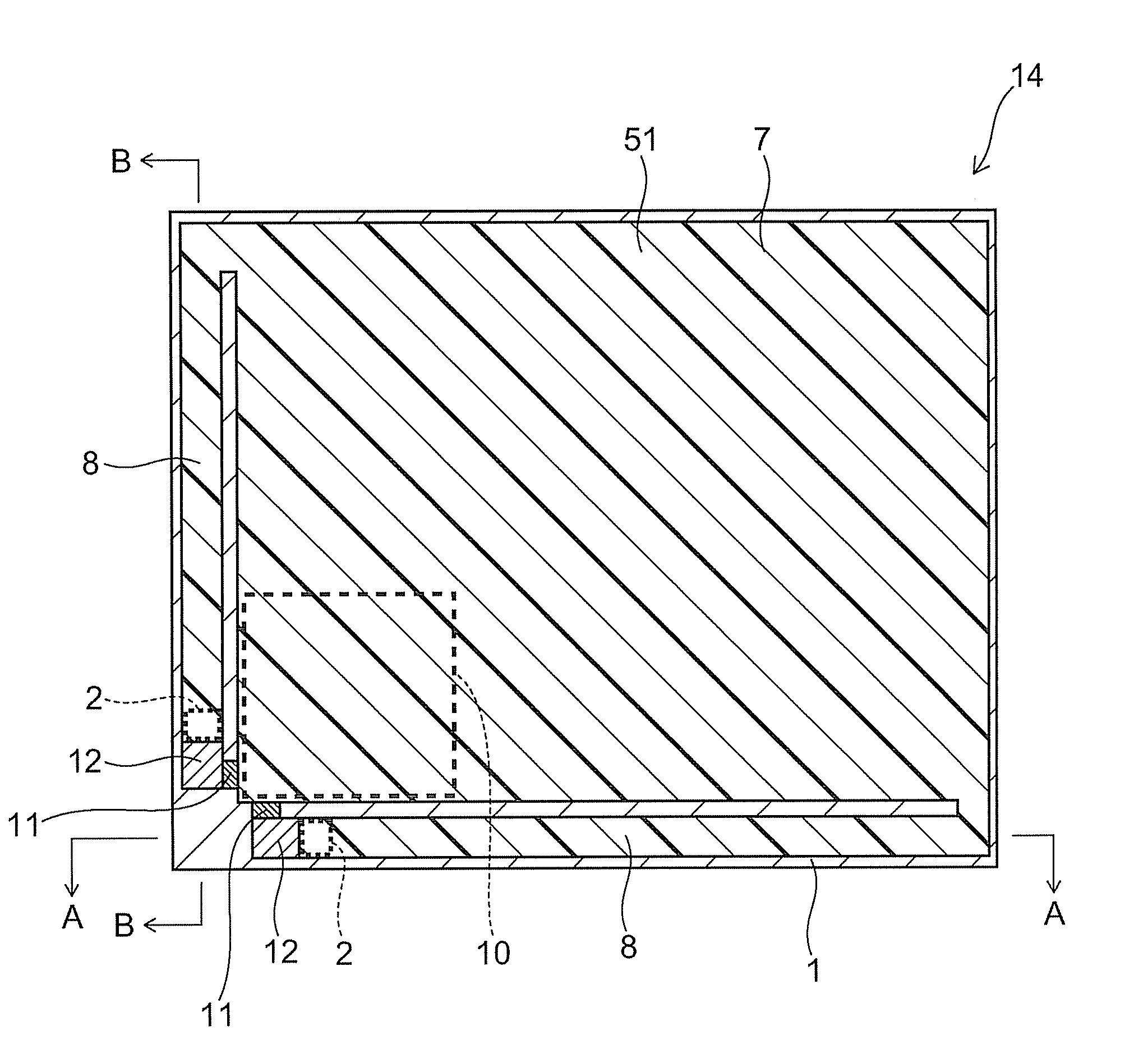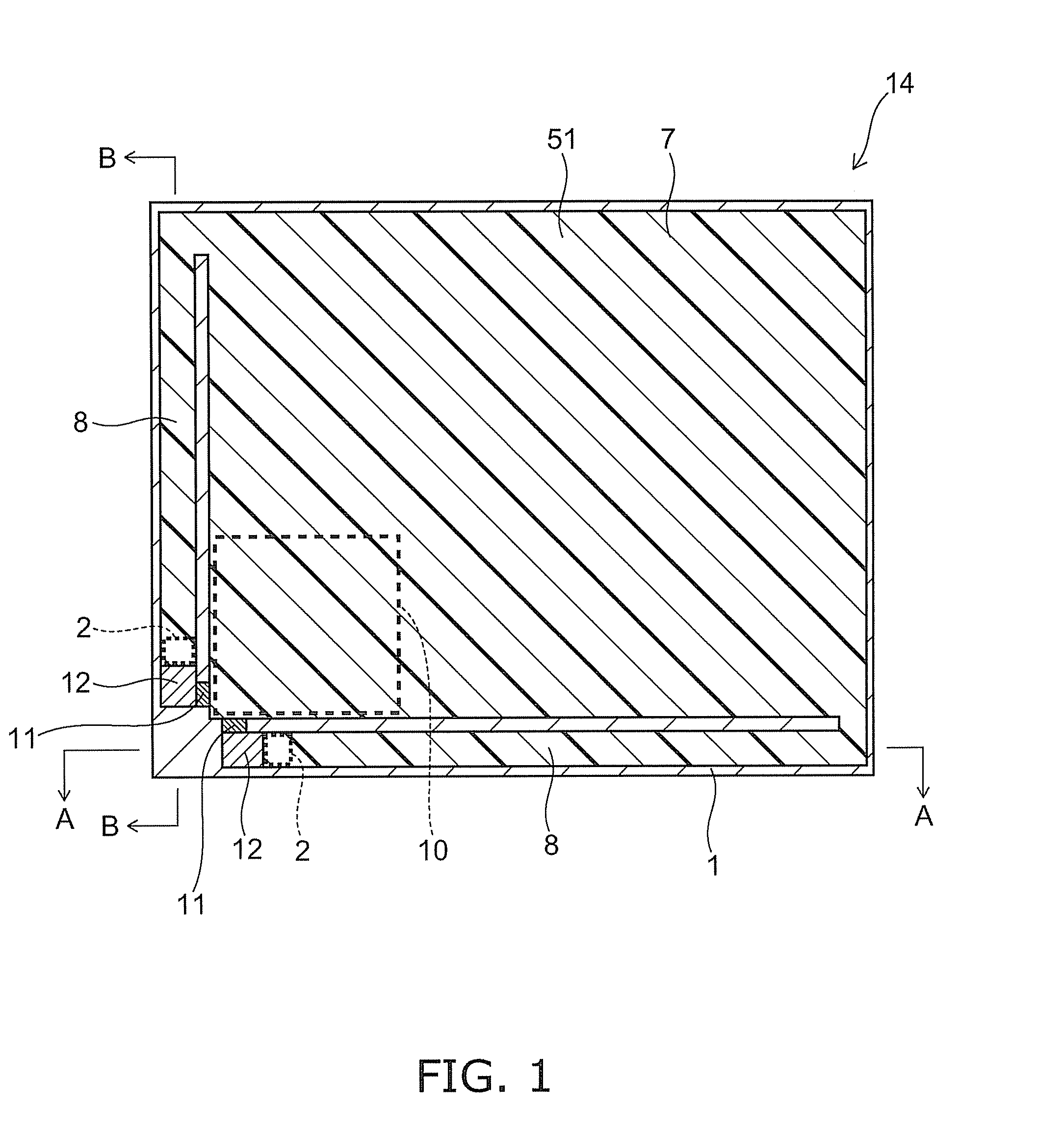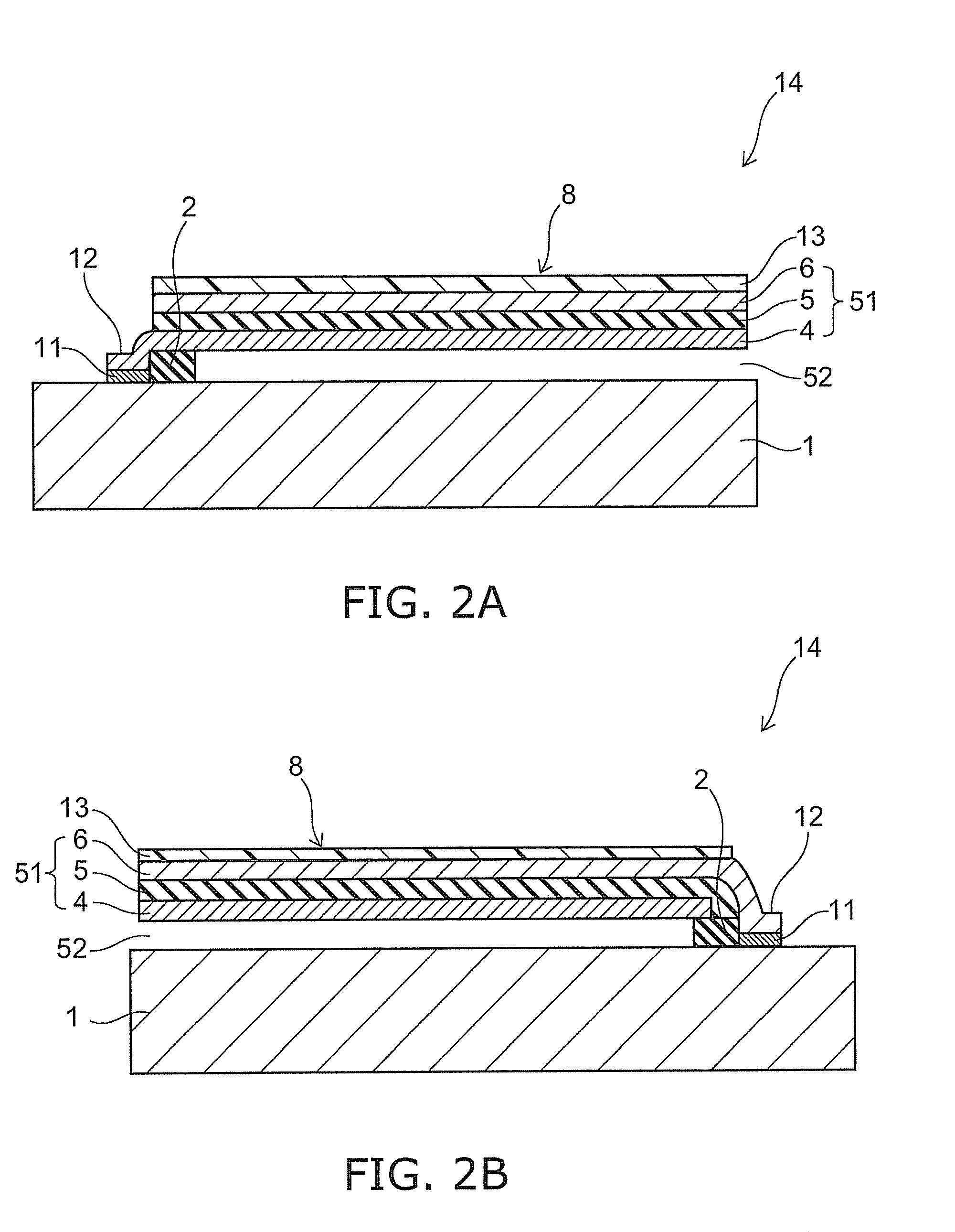Infrared-detecting element and infrared image sensor using the same
a technology of infrared sensor and infrared image, which is applied in the direction of thermoelectric devices, optical radiation measurement, instruments, etc., can solve the problems of difficult preparation of materials directly on silicon substrates for infrared sensors produced by cmos process, high crystallization temperature, and difficult ion etching
- Summary
- Abstract
- Description
- Claims
- Application Information
AI Technical Summary
Benefits of technology
Problems solved by technology
Method used
Image
Examples
first embodiment
[0032]FIG. 1 is a plan view of an infrared-detecting element 14 according to a first embodiment. And, FIG. 2 is a partial section view of the infrared-detecting element according to the first embodiment, and FIGS. 2A and 2B are section views of A-A line and B-B line of FIG. 1, respectively.
[0033]As shown in FIGS. 1 and 2, an anchor 2 is formed on a substrate 1. A laminated body 51 is composed of a lower electrode 4, an upper electrode 6, and a piezoelectric film 5 sandwiched by the lower electrode 4 and the upper electrode 6. A connecting beam 8 that is an end of the laminated body 51 is coupled to the anchor 2, and the laminated body 51 is supported by the anchor 2 in the state with a gap 52 in an upper portion of the substrate 1. Moreover, amplifier 10 is formed on the substrate 1, and each of the lower electrode 4 and the upper electrode 6 is connected with a contact portion 12 to a interconnection 11 from the amplifier 10. Moreover, on the upper electrode 6, an infrared-absorbin...
second embodiment
[0078]Next, the infrared-detecting element according to a second embodiment of this invention will be explained.
[0079]FIG. 4 is a plan view of the infrared-detecting element 15 according to a second embodiment of this invention. Moreover, FIG. 5 is a section view of A-A section view. The laminated body 51 and the thermosensitive portion 7 have a cantilever beam structure for the first embodiment but have a center impeller beam structure for the second embodiment. The same numbers are appended to the components having the same roles as the first embodiment will be explained.
[0080]As shown in FIGS. 4 and 5, the anchors 2 are formed at two places on the substrate 1. The laminated body 51 is composed of the lower electrode 4, the upper electrode 6, and the piezoelectric film 5 sandwiched by the lower electrode 4 and the upper electrode 6. The portions of connecting beams 8 of right and left ends of the laminated body 51 are connected to the anchors 2, and the laminated body 51 is suppor...
third embodiment
[0100]Next, an infrared-detecting element of a third embodiment of this invention will be explained.
[0101]FIG. 8 is a circuit view showing a circuit structure of the infrared-detecting element according to the third embodiment. As shown in FIG. 8, in the infrared-detecting element 300 of the third embodiment, the amplifier 310 is connected to the laminated body 301, and includes a first transistor 303 for converting the charge generated in the laminated body 301 into voltage, a second transistor (load transistor) 302 connected to the first transistor 303, a first terminal 304 for applying voltage to a gate of the second transistor 302, a second terminal 305 for applying voltage to source of the second transistor 302, and a third terminal 306 for getting charge information from drain of the first transistor 303. As shown in FIG. 8, in the infrared-detecting element 300 of the third embodiment, the amplifier formed on the substrate has a circuit for converting information of charge ge...
PUM
 Login to View More
Login to View More Abstract
Description
Claims
Application Information
 Login to View More
Login to View More - R&D
- Intellectual Property
- Life Sciences
- Materials
- Tech Scout
- Unparalleled Data Quality
- Higher Quality Content
- 60% Fewer Hallucinations
Browse by: Latest US Patents, China's latest patents, Technical Efficacy Thesaurus, Application Domain, Technology Topic, Popular Technical Reports.
© 2025 PatSnap. All rights reserved.Legal|Privacy policy|Modern Slavery Act Transparency Statement|Sitemap|About US| Contact US: help@patsnap.com



